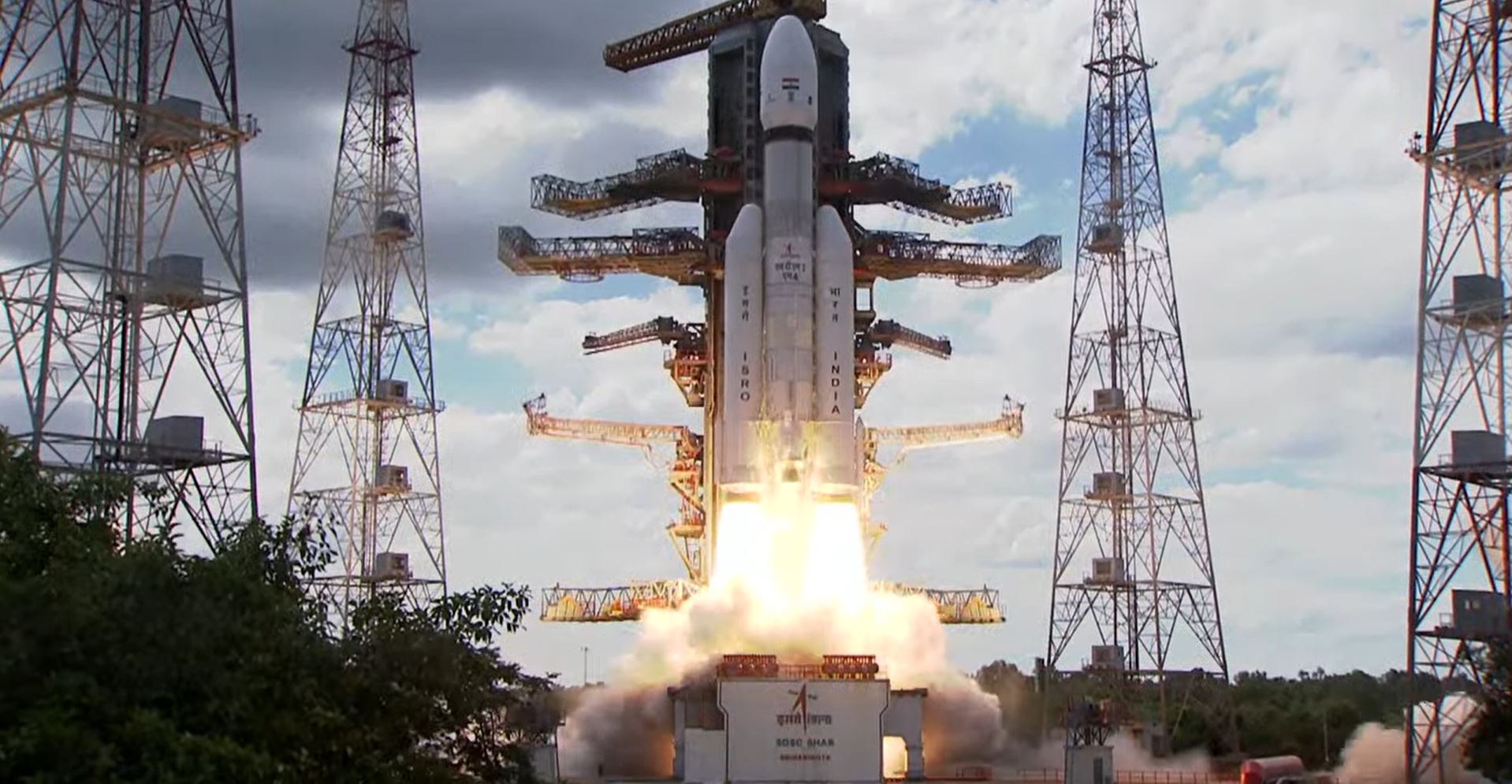
SEOUL, South Korea — India successfully launched a robotic lunar lander July 14, setting up the nation for its second attempt to soft-land on the moon.
The Chandrayaan-3 spacecraft lifted off on an LVM-3 heavy-lift rocket from Satish Dhawan Space Centre at 5:05 a.m. Eastern Friday as scheduled. Live footage showed the three-stage rocket with two strap-on side boosters soaring into the air with bright yellow exhaust shooting out of its first-stage engines.
The Indian Space Research Organization (ISRO) declared the launch a success shortly after the deployment. “Congratulations India. Chandrayaan-3 has started its journey towards the moon,” said ISRO Director Sreedhara Panicker Somanath said soon after deployment. “Let us wish all the best for the Chandrayaan spacecraft for its journey toward the moon.”
Chandrayaan-3, consisting of a propulsion module, Vikram lander and the small Pragyan rover, is now on a fuel-efficient, three-week-long journey which will see it continually raise its current elliptical Earth orbit and eventually perform a trans-lunar injection maneuver. It is scheduled to arrive in lunar orbit Aug. 5.
Once in lunar orbit, the propulsion module will be jettisoned. The Vikram lander will begin an autonomous descent, expected on Aug. 23 or 24, to a targeted landing site near the lunar South Pole. The landing site is located at 69.37 degrees south latitude and 32.35 degrees east longitude.
ISRO chose the prime landing site using high-resolution photographs and data from Chandrayaan-2 orbiter and NASA’s Lunar Reconnaissance Orbiter.
A successful Chandrayaan-3 landing will make India the fourth country in the world to achieve a lunar landing, following the U.S., the former Soviet Union and China. The mission would also be the first to land near the lunar south pole. No previous Moon mission has landed at a lower latitude.
The three main objectives of the mission are to safely land on the lunar surface, collect data and conduct a series of scientific experiments to learn more about the moon’s composition.
The mission is a follow-up to the Chandrayaan-2 lunar landing attempt which failed in 2019 due to a software glitch. That mission carried an orbiter which is still in operation around the moon.
Chandrayaan-1, India’s first moon probe, launched in 2008 and spent a year in lunar orbit hunting for evidence of water molecules. It was then deliberately commanded to crash-land onto the lunar surface in 2009.
Chandrayaan-3 was developed by ISRO and is a two-module configuration. The 2,148-kilogram propulsion module and a 1,752-kilogram lander named “Vikram” which also carries the 26-kilogram Pragyan rover.
The propulsion module will carry the lander and rover from injection orbit to 100 kilometers above the moon. Once on the site, the Vikram lander will deploy the six-wheeled Pragyan rover via a ramp. The solar-powered duo will carry out a set of scientific experiments for the duration of daytime at the landing site. One period of lunar daylight on the moon lasts for fourteen Earth days. Without radioisotope heater units the spacecraft are not expected to survive the deep cold of lunar nighttime.
Vikram carries seven science payloads, including an instrument to measure the local plasma environment, an alpha particle X-Ray spectrometer and a Laser Induced Breakdown Spectroscope (LIBS) module, and the Spectro-polarimetry of Habitable Planetary Earth (SHAPE) payload to study the spectral and polarimetric measurements of earth from the lunar orbit.
The lander will detect seismic activities to provide clues about the moon’s internal structure and measure the plasma density and its variations. It will also measure soil temperature about 10 centimeters beneath the lunar surface throughout the lunar day and contribute to lunar laser ranging studies using a NASA-contributed retroreflector aboard.
Chandrayaan-3 is part of a wider, renewed international interest in the moon. The mission follows six moon landing attempts in the past decade. These include China’s Chang’e 3, 4 and 5 successful lunar landings and the unsuccessful Israeli Beresheet, Indian Chandrayaan-2 and Japanese Hakuto-R Mission 1 missions.
Next month Roscosmos plans to launch its Luna 25 lander. This is expected to be followed shortly after by Japan’s launch of its Smart Lander for Investigating Moon (SLIM) mission. Intuitive Machines plans to launch its IM-1 on a Falcon 9 later this year as part of NASA’s Commercial Lunar Payload Services (CLPS) program later this year, while Astrobotic Technology’s Mission One, also part of CLPS, could also launch before the end of the year on a ULA Vulcan Centaur rocket.
SpaceNews correspondent Andrew Jones contributed from Helsinki, Finland.
Related
ncG1vNJzZmiroJawprrEsKpnm5%2BifKq6w6KYZqSRqruktMSsZJygkaOxs63YmpinZWNiuba6wKtkpZmembavs4ymoKyrmaS7cA%3D%3D